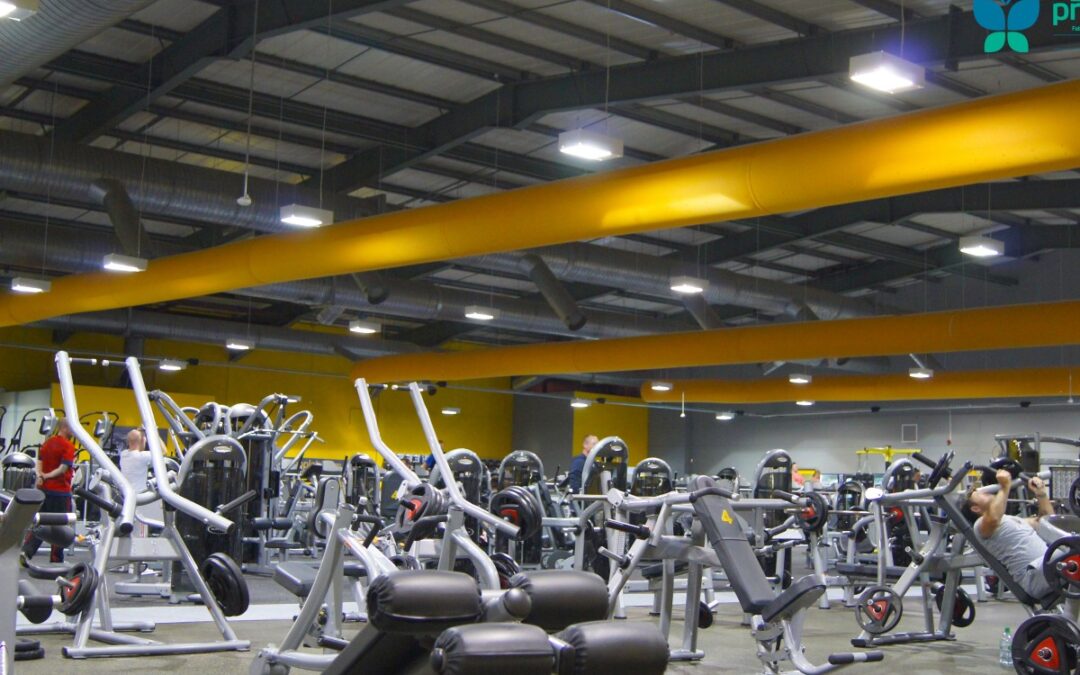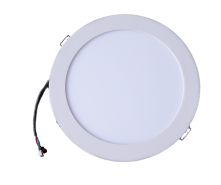Last Updated on April 18, 2024 by geeneza tapangan
As a fitness gym owner, you understand the pulse of your establishment—the rhythmic beat of treadmills, the clank of weights, and the collective breaths of determination. But amidst this energetic symphony, there’s an often overlooked yet crucial element: ventilation.
Picture this: A packed gym, bodies in motion, and the air thick with sweat and effort. Without proper ventilation, your gym could become a stifling environment, hindering performance, health, and overall experience.
Recognising the importance of proper fitness gym ventilation is paramount for gym owners. Ensuring adequate airflow not only prioritises the health and safety of your employees and members but also safeguards your equipment and structure. In this comprehensive fitness gym ventilation guide, we explore the impact of ventilation, discuss best practices, and offer innovative solutions.
In this guide, we delve into the various regulations governing gym ventilation to maintain a safe and healthy environment. We will cover the laws and standards pertaining to gym ventilation, alongside methods for assessing and enhancing ventilation in your gym.
The Effects of Poor Ventilation in Fitness Gyms
Effect on Physical Health
Keeping your fitness gym well-ventilated is vital for your physical health. Poor ventilation can trigger various health issues like headaches, respiratory issues, and allergies. Moreover, it boosts the risk of mould growth, which can lead to more severe health complications.
Effect on Mental Health
Proper ventilation significantly contributes to maintaining mental wellness. Insufficient airflow can contribute to mental health issues such as anxiety, depression, and stress. This is especially important for any staff that may be spending extended periods of time in your gym.
Optimal Athletic Performance
Maintaining proper ventilation is key to sustaining peak athletic performance. Subpar airflow can result in problems like fatigue, injuries, and reduced stamina.
Additionally, poor ventilation can also influence the transmission of contagious illnesses like COVID-19.
Now that we’ve explored the effects of poor ventilation, let’s delve into the responsibilities that gym owners have in maintaining proper airflow.
Responsibility of Gym Owners
Gym owners have a responsibility to ensure that their facility has appropriate ventilation to create a safe and healthy environment for their employees and members. Being aware of the established state and local regulations is critical.
Fitness Gym Ventilation Codes and Standards
Gym owners must familiarise themselves with a range of codes and standards that govern gym ventilation. It’s crucial to ensure compliance with these requirements to maintain a safe and healthy environment in their facility.
Ventilation is addressed in specific OSHA standards for general industry, maritime, and construction.
OSHA Regulations for Fitness Gyms
The guidelines specified by the Occupational Safety and Health Administration (OSHA) include requirements for air temperature, airflow, and air intake flow rate. According to OSHA, enclosed spaces like fitness gyms must maintain a minimum ventilation rate of 20 cubic feet per minute per person or 10 litres per second per person. In certain workplaces, this requirement is higher requiring a circulation of 15 litres per person per second.
Based on the information above, under sections 20, 21, and 22 of the OHS Act, employers are required to do the following (but not limited to):
- Provide adequate fresh air to prevent the accumulation of indoor air pollutants: This can be accomplished through natural or mechanical ventilation systems.
- Ensure proper airflow to contain the spread of COVID-19.
- Monitor workplace conditions. A CO2 monitor can be helpful in assessing ventilation provision to aid ventilation opening modulation.
- Improve airflow in the building by opening windows, redirecting the flow of exhaust systems away from windows and doors, and adjusting air conditioning settings to reduce or eliminate recirculated air.
- Ensure fresh air circulation in the building aligns with the Australian Standard AS 1668 Part 2. This requirement is 10 litres per second per person of outdoor air inflow in most workplaces.
- In certain workplaces, this requirement is higher, with nightclubs, hairdressers, games rooms, bowling alleys, and ballrooms requiring a circulation of 15 litres per second per person.
- Additionally, if the temperature of the workplace exceeds 27 degrees Celsius, fresh air circulation needs to increase to 15 litres per second per person.
Gym ventilation requirements vary depending on location and building specifications. We recommend reviewing state and local building codes and regulations, as well as specialists, to ensure compliance and safety.
Measuring Ventilation and Air Quality in Your Fitness Gyms
To make sure your fitness gym meets ventilation standards, it’s crucial to regularly check and test the air quality of it. You can do this with tools like air quality monitors and ventilation testing gear, available online. Do some research to find the best fit for your gym facility.
How To Improve Your Fitness Gym Ventilation
Enhancing the airflow in your gym can be achieved through various methods. Start by considering natural ventilation, regular HVAC upkeep, integration of HEPA filters, ceiling fans, and mechanical ventilation systems. Additionally, ensure proper functioning of air intakes and exhaust systems, monitor outdoor air quality, and manage moisture levels. These strategies collectively contribute to a healthier and more comfortable gym environment.
Natural Ventilation
Letting fresh air in naturally by opening doors and windows can freshen up your gym’s air quality. However, this might not always be possible due to weather or location constraints.
HVAC Maintenance and HEPA Filters
Regularly maintaining your HVAC system and using HEPA filters that is capable of removing at least 99.97% of airborne particles.
Air Intakes and Exhaust
Functioning air intakes and exhaust fans remove stale air and bring in fresh air, reducing indoor pollution and preventing mould growth.
Outdoor Air Quality
The air outside your gym can affect the quality of air inside as well. Monitoring and addressing outdoor pollution sources like heavy traffic or industrial facilities helps maintain indoor air quality.
Moisture Control
Combat moisture-related issues like mould growth by promptly addressing leaks and humidity levels with dehumidifiers.
Ceiling Fans
Although, we don’t recommend the use of ceiling fans, as they can push back down hot and contaminated air, as discussed in this blog post. Instead, we suggest opting for roof ventilation fans for better ventilation in your gym.
Roof Ventilation Fans
Roof ventilation fans play a crucial role in maintaining indoor air quality for your fitness gyms. By continuously supplying fresh outdoor air and effectively exhausting stale indoor air, these systems enhance the health and well-being of occupants, prevent the accumulation of contaminants, and contribute to a high-quality indoor environment. Additionally, a roof ventilation fan ensures proper air circulation, energy efficiency, and protection against issues like mould growth and moisture damage.
In today’s climate, prioritising clean air in gyms is crucial for staff and members’ well-being.
Impacts of Proper Fitness Gym Ventilation
In the world of fitness, ensuring your gym has top-notch ventilation is an absolute game-changer. It’s not just about keeping the air fresh; it’s about nurturing an environment that promotes health, both physically and mentally. Let’s delve into why proper airflow matters so much.
First off, when we talk about ventilation, we’re talking about more than just letting some air in. We’re talking about a system that actively removes pollutants and moisture, keeping the air clean and crisp. It’s not just about comfort; it’s about health.
Picture this: You walk into your gym, and instead of being hit by a stuffy, musty smell, you’re greeted by a fresh breeze. That’s the power of good ventilation. It kicks out all the bad stuff—mould, funky odours, and other nasties—making the air easier to breathe for both you and your fellow gym-goers.
Impact of Proper Fitness Gym Ventilation on Physical Health
Now, let’s talk physical health. With proper ventilation, you can kiss goodbye to those pesky headaches and respiratory issues that often plague poorly ventilated spaces. No more sneezing fits or itchy eyes. Good airflow means a healthier you.
Impact of Proper Fitness Gym Ventilation on Mental Health
But it’s not just your body that benefits; your mind does too. Research shows that poor indoor air quality can mess with your mental health, leading to anxiety, stress, and even depression. But with a well-ventilated gym, you can sweat it out without worrying about your mood taking a nosedive.
Impact of Proper Fitness Gym Ventilation in Overall Athletic Performance
And hey, let’s not forget about performance. Whether you’re pumping iron or hitting the treadmill, having the right airflow can make all the difference. It keeps the temperature just right, the humidity in check, and ensures there’s enough fresh air circulating to keep you going strong. Say goodbye to feeling sluggish and hello to smashing your PBs.
Plus, in the age of COVID-19, proper gym ventilation is more important than ever. It helps reduce the spread of germs, keeping you and your fellow gym junkies safe and healthy.
So, if you want to take your fitness game to the next level, make sure your fitness gym’s ventilation is up to scratch. Your body, mind, and performance will thank you for it.
In Conclusion
Making sure your gym has top-notch ventilation isn’t just about comfort—it’s about keeping everyone safe and healthy while they work up a sweat. As a gym owner, it’s crucial to meet ventilation standards and regulations, and that’s where Solar Whiz commercial roof exhaust fans step in.
Solar Whiz fans are the answer to your ventilation needs. They’re a breeze to install and maintain, harnessing the power of the sun to keep your gym’s air fresh and clean. With Solar Whiz, you can say goodbye to stuffy spaces and hello to a breath of fresh air for your staff and members.
Plus, investing in Solar Whiz fans is an investment in energy efficiency. They’re a cost-effective solution that will help slash your energy bills while keeping your gym’s air quality top-notch. Don’t hesitate—transform your gym’s ventilation with Solar Whiz today and elevate your gym members’ experience.
Frequently Asked Questions
How to ensure my fitness gym is well-ventilated?
Ensure your fitness gym is well-ventilated by following the guidelines specified by the Occupational Safety and Health Administration (OSHA) and utilising a proper gym ventilation system. This ensures compliance with regulations and provides adequate airflow to maintain air quality. Solar Whiz is Australian-made and complies with stringent Australian regulations!
How to remove bad odour in fitness gyms or centres?
To effectively eliminate bad odours in fitness gyms or centres, prioritise effective gym ventilation. Proper ventilation systems circulate fresh air, reducing odour buildup from sweat and equipment. Regular maintenance of ventilation systems, along with implementing air purifiers and proper cleaning protocols, can help maintain a pleasant environment.
Why ventilation is important in fitness gyms?
Ventilation is crucial in fitness gyms to maintain air quality and reduce the spread of airborne contaminants like sweat particles and germs. Proper ventilation systems ensure sufficient airflow, minimising odours, preventing respiratory issues, and enhancing overall comfort for gym-goers.
How to keep the air fresh in fitness gyms?
Ensure the air stays fresh in fitness gyms by actively implementing effective gym ventilation. Utilise gym ventilation systems to circulate fresh air, combating odours, and preserving air quality. This proactive approach creates a more pleasant environment for gym users, enhancing their experience and satisfaction.
How to prevent the spread of viruses in fitness gyms?
To prevent virus spread in fitness gyms, implement effective gym ventilation systems. These systems help circulate fresh air, reducing the concentration of airborne pathogens. Alongside ventilation, enforce strict hygiene measures, such as regular disinfection of equipment, encouraging hand hygiene, and promoting social distancing to enhance overall safety.




